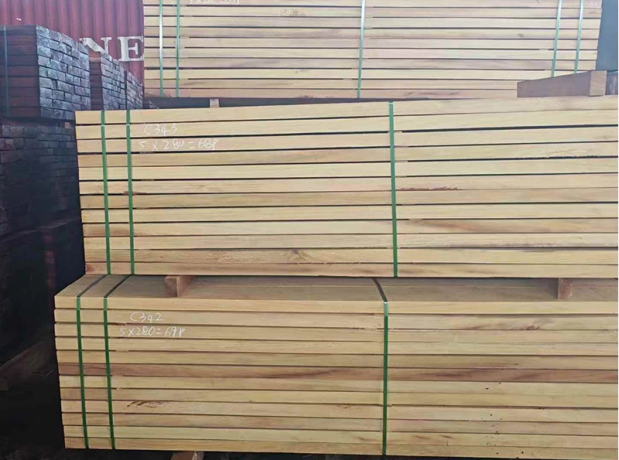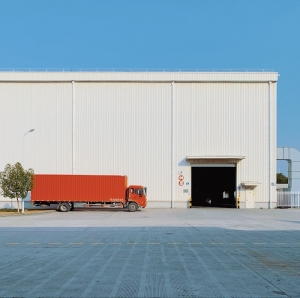please click here:
https://www.shdtimber.com/products.html
Iroko wood, often referred to as "African teak," is a tropical hardwood native to West and Central Africa. Its striking resemblance to genuine teak, both in appearance and durability, has made it a popular choice for various applications. This article delves deeply into the characteristics, history, uses, advantages, challenges, and considerations of Iroko wood, providing a comprehensive guide for enthusiasts, architects, and woodworking professionals.
A Brief History of Iroko Wood
Iroko (Milicia excelsa) has a long history of use in Africa, where it has been prized for its strength and resistance to decay. Historically, it was used for constructing homes, bridges, boats, and ceremonial artifacts. Its durability and aesthetic qualities made it a preferred material among African artisans. In modern times, Iroko has gained international recognition as a sustainable and cost-effective alternative to teak, making its way into furniture, flooring, and even high-end interior design.
Botanical and Geographical Overview
Iroko trees are large evergreen trees, often growing up to 50 meters in height, with broad crowns and dense wood. They are predominantly found in countries such as Ghana, Nigeria, Cameroon, and the Ivory Coast. The tree thrives in tropical climates with high rainfall and fertile soil. It is slow-growing, which contributes to the density and durability of its wood.
Key Characteristics of Iroko Wood
Durability and Resistance
Iroko wood is highly durable, with natural resistance to rot, fungal attacks, and insect infestations. Unlike many other hardwoods, it can endure harsh outdoor conditions without the need for chemical treatments. Its natural oils act as a protective barrier, which explains its long lifespan even in marine environments or high-moisture areas.
Workability
Despite its density, Iroko is relatively easy to work with proper tools. Its interlocked grain can be challenging for cutting and planing, so carbide-tipped tools are recommended to maintain efficiency. The wood sands smoothly and can take a wide range of finishes, from natural oils to varnishes, allowing craftsmen to achieve desired aesthetics.
Stability
Iroko exhibits excellent dimensional stability. It is less prone to warping or shrinking compared to other tropical hardwoods, making it suitable for applications such as flooring, decking, and boat building where stability is crucial.
Color and Grain
The heartwood of Iroko ranges from golden yellow to medium brown, darkening with age and exposure to sunlight. The sapwood is lighter, nearly white to pale yellow, and clearly distinguishable from the heartwood. The grain is generally interlocked and coarse in texture, providing a visually striking appearance that enhances furniture and decorative pieces.
Uses of Iroko Wood
Furniture and Joinery
Iroko's combination of durability, stability, and aesthetic appeal makes it a preferred choice for crafting high-quality furniture, cabinets, doors, and window frames. It can be finished in multiple ways, allowing designers to create both traditional and modern looks. The wood's natural oils give furniture a warm glow over time, enhancing its elegance.
Flooring and Decking
Iroko is increasingly used for hardwood flooring and decking due to its high resistance to wear, moisture, and outdoor elements. It provides a similar visual and functional appeal to teak at a more accessible price point. Iroko decking is particularly popular in tropical and coastal areas due to its resilience against rot and termites.
Boat and Marine Applications
The wood's durability and water resistance make it suitable for boat building and other marine structures. Historically, Iroko has been used in the construction of riverboats, piers, and docks. Its stability under fluctuating humidity and water exposure ensures a long-lasting marine application.
Musical Instruments and Art
Iroko is sometimes used in the crafting of musical instruments such as drums and xylophones due to its acoustic properties. Artisans also use it for sculpting ceremonial masks, carvings, and other decorative items in African cultures.
Outdoor Structures
Garden furniture, pergolas, fences, and gazebos benefit from Iroko's resistance to decay and insect attacks. Unlike softer woods, it can endure long-term outdoor exposure without extensive maintenance.
Iroko Wood vs. Teak: A Detailed Comparison
| Feature | Iroko Wood | Teak Wood |
|---|---|---|
| Origin | West and Central Africa | Southeast Asia |
| Color | Golden yellow to medium brown | Golden to medium brown |
| Grain | Interlocked, coarse | Straight, fine |
| Durability | High | Very high |
| Water Resistance | High | Very high |
| Workability | Moderate (abrasive on tools) | Easy |
| Cost | Lower | Higher |
| Sustainability | Near Threatened, responsible sourcing recommended | Sustainable plantations widely available |
| Common Uses | Furniture, decking, boat building, flooring | Furniture, decking, boat building, flooring |
From this comparison, it is clear that while teak maintains a slight edge in water resistance and global recognition, Iroko provides a comparable alternative at a significantly lower cost. Its availability from African suppliers allows designers and builders to achieve similar results while supporting emerging timber markets.
Advantages of Iroko Wood
-
Cost-Effective: Iroko provides the aesthetic and functional benefits of teak without the premium price, making it accessible to a wider market.
-
Naturally Resistant: Its inherent protection against rot, decay, and insect damage minimizes the need for chemical treatments.
-
Versatile: Suitable for furniture, flooring, decking, boat building, and artistic applications.
-
Sustainable: When sourced responsibly, Iroko can be a sustainable timber choice, supporting local economies in Africa.
-
Aesthetic Appeal: Its warm golden-brown hue and interlocked grain enhance both traditional and modern designs.
Considerations When Using Iroko Wood
-
Tool Wear: The high density and mineral content can dull cutting tools quickly. Using carbide-tipped blades and proper maintenance can mitigate this.
-
Allergy and Dust Sensitivity: Wood dust can irritate skin and respiratory systems, so protective masks and ventilation are recommended during woodworking.
-
Color Variation Over Time: The heartwood darkens with age and exposure to sunlight, which may result in variations when used in large surface areas.
-
Supply and Sustainability: Milicia excelsa is listed as Near Threatened, making it important to ensure that the wood comes from certified and sustainable sources.
Tips for Working with Iroko Wood
-
Cutting and Planing: Use sharp, carbide-tipped tools to prevent tearing and excessive wear.
-
Sanding: Begin with coarse grit to level surfaces, then finish with fine grit for smoothness.
-
Finishing: Oils and varnishes enhance the natural golden tones of Iroko. Regular oiling can help maintain its color and resistance.
-
Maintenance: Outdoor furniture and decking may benefit from occasional cleaning and oiling to preserve appearance and durability.
-
Joining Techniques: Pre-drill holes for screws and nails to prevent splitting due to the wood's density.
Market Trends and Applications
Global demand for sustainable hardwoods has increased significantly, and Iroko is increasingly recognized as a viable alternative to teak. Furniture makers, decking suppliers, and architects are turning to Iroko due to its combination of aesthetics, durability, and cost-effectiveness. In Europe and North America, Iroko has found a niche in high-end outdoor furniture, decking, and flooring markets, often marketed as “African teak.”
Additionally, the wood has cultural significance in African communities, where it is traditionally used for ceremonial objects, religious structures, and artisan crafts. Supporting the Iroko market also contributes to the livelihoods of local communities involved in sustainable forestry.
Sustainability and Certification
Sustainable sourcing of Iroko wood is critical due to overharvesting and habitat loss. Look for certifications from organizations such as FSC (Forest Stewardship Council) or equivalent local sustainable forestry programs. Responsible sourcing ensures that forests are replenished, ecosystems remain healthy, and the wood remains available for future generations.
Conclusion
Iroko wood is a versatile, durable, and cost-effective tropical hardwood that rivals teak in functionality and aesthetic appeal. Its natural resistance to decay and insects, stability, and warm golden color make it suitable for furniture, decking, flooring, boat building, and decorative arts. While responsible sourcing is essential due to its Near Threatened status, Iroko represents an exciting opportunity for designers, builders, and artisans seeking sustainable, high-quality wood.
By understanding its characteristics, advantages, and challenges, professionals and enthusiasts alike can make informed decisions when selecting Iroko wood for their projects.
Frequently Asked Questions
1. Is Iroko wood suitable for outdoor furniture?
Yes, Iroko's natural resistance to rot and insects makes it excellent for outdoor applications, including furniture and decking.
2. How does Iroko compare to teak in terms of durability?
Iroko offers comparable durability to teak, particularly for outdoor and marine applications, but is generally more cost-effective.
3. Can Iroko wood be used for flooring?
Absolutely. Its strength and stability make it suitable for residential and commercial flooring projects.
4. Is Iroko wood easy to maintain?
Yes, Iroko requires minimal maintenance. Regular oiling can enhance its natural color and extend its life, especially in outdoor settings.
5. Where can I purchase Iroko wood?
Reputable timber merchants and certified tropical hardwood suppliers offer Iroko wood. Always ensure it is sourced sustainably.
6. What are the environmental concerns regarding Iroko wood?
Iroko is classified as Near Threatened due to overharvesting. Sustainable sourcing and certification help mitigate environmental impact.
7. How should I finish Iroko wood for long-lasting durability?
Use natural oils, varnishes, or sealants. Regular maintenance and protection from prolonged exposure to extreme sunlight help preserve its appearance.
Article Summary
Iroko wood, known as African teak, is a durable and versatile hardwood prized for furniture, flooring, decking, and boat building. Its natural resistance to decay and insects, aesthetic appeal, and cost-effectiveness make it a preferred alternative to teak. Responsible sourcing ensures sustainability and supports local communities.






